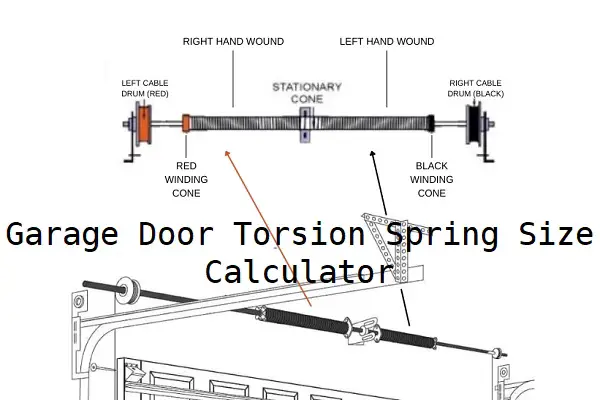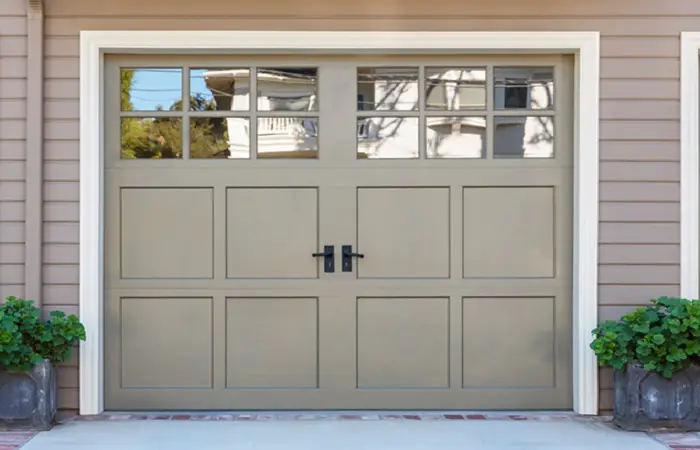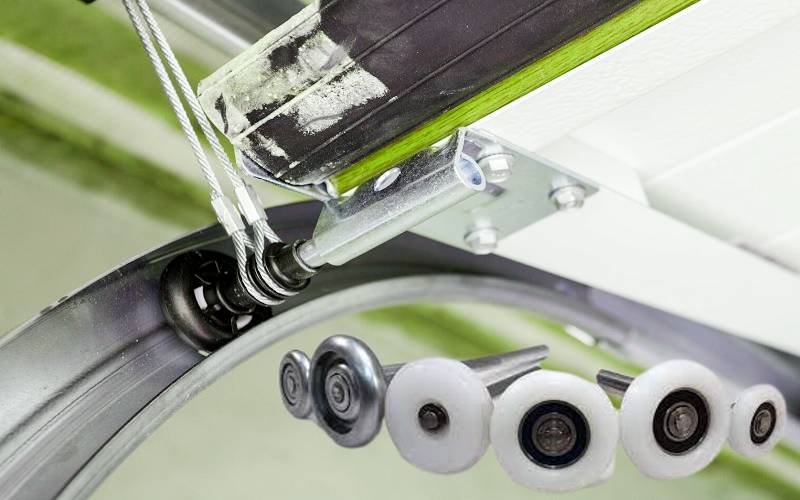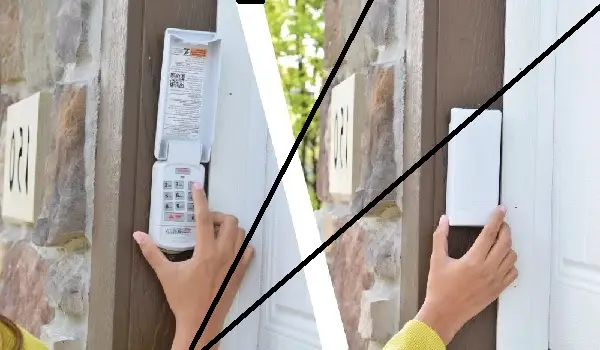Garage Door Torsion Spring Size Calculator
Garage Door Torsion Spring Size Calculator Garage door might be the unsung hero of your home, tirelessly opening and closing […]

Garage Door Torsion Spring Size Calculator
Garage door might be the unsung hero of your home, tirelessly opening and closing to keep your belongings safe. However, when it starts acting up, it’s time to turn your attention to the springs. In this guide, I’ll explore how to conquer garage door issues by finding the right spring size in minutes, empowering you to handle DIY repairs like a pro.
Understanding Garage Door Springs
Different Springs, Different Needs (Torsion vs. Extension)
Before diving into spring sizes, let’s understand the two main types: torsion springs and extension springs. Each serves a unique purpose based on the door’s weight and movement. Knowing the difference is crucial for effective garage door maintenance.
Torsion springs are mounted horizontally above the door and store energy by twisting. Extension springs, on the other hand, stretch and contract vertically alongside the door tracks. Understanding these distinctions ensures you choose the right spring for your specific requirements.
Why the Right Spring Size Matters
Selecting the correct spring size isn’t just about smooth door operation; it’s a safety imperative. An unbalanced door not only poses safety risks but can lead to broken springs, uneven lifting, and potential property damage. Let’s delve into why the right spring size is paramount for the well-being of your garage door and everyone around it.
Introducing the Garage Door Spring Size Calculator

In the realm of garage door maintenance, precision is key. Introducing the Garage Door Spring Size Calculator – a revolutionary tool designed to simplify the often complex process of choosing the right spring for your garage door. This online calculator is your ally in ensuring that your garage door operates seamlessly, minimizing the risk of issues such as unbalanced doors, safety hazards, and untimely repairs.
Why Use the Garage Door Spring Size Calculator?
- Online Convenience: Accessible from the comfort of your home, this calculator eliminates the need for tedious manual calculations. Simply input your garage door’s specifications, and let the calculator do the heavy lifting.
- Easy-to-Use Interface: No need for advanced technical knowledge. The user-friendly interface guides you through the input process, making it accessible to both seasoned DIY enthusiasts and those new to garage door maintenance.
- Accurate Measurements: Precision matters when it comes to garage door springs. The calculator ensures accurate measurements, taking into account variables such as door height, width, track radius, spring diameter, wire size, and winding coils.
- Quick Results: Time is of the essence. Receive instant results tailored to your door’s specifications. No more waiting or second-guessing – the calculator provides swift recommendations for your convenience.
Using the Calculator (Step-by-Step)
Let’s walk through an example to illustrate how to interpret the results and choose the right spring using the Garage Door Spring Size Calculator.
Suppose you’ve measured your garage door’s height, width, track radius, spring diameter, wire size, and winding coils. After entering these values into the calculator, you receive the following results:
- Spring Weight Capacity: 200 pounds
- Compatible Models: XYZ Springs, Model ABC-123
- Brand Recommendations: Trusted Garage Solutions
- Safety Warnings: Ensure proper tensioning during installation, use safety gear, and avoid overloading the spring.
Online calculator that you can use:
Now, let’s break down each aspect:
Spring Weight Capacity:
The calculator indicates that the recommended spring has a weight capacity of 200 pounds. This means it can effectively handle a garage door weighing up to 200 pounds. It’s crucial not to exceed this limit to prevent unnecessary strain on the spring.
Compatible Models:
The provided information suggests that the spring size aligns well with specific models, such as XYZ Springs and Model ABC-123. Cross-reference this with your garage door’s make and model to confirm compatibility. This step ensures that the chosen spring is tailored to your door’s design.
Brand Recommendations:
The calculator recommends Trusted Garage Solutions as a trusted brand for the spring. Brand reputation matters, as established brands often deliver reliable and durable products. Consider this recommendation as a stamp of approval for the spring’s quality.
Safety Warnings:
Pay close attention to the safety warnings provided. In this example, the emphasis is on proper tensioning during installation, using safety gear, and avoiding overloading the spring. Following these guidelines is crucial to prevent accidents and ensure a safe installation process.
Aligning with Your Garage Door’s Requirements:
Combining all these factors, you’re now equipped to choose the perfect spring for your garage door. If your door weighs around 180 pounds, falls within the compatible models, and Trusted Garage Solutions aligns with your preferences, you’ve found the ideal match. Always prioritize safety by adhering to the provided guidelines during installation.
Let’s delve deeper into the factors influencing spring size and see how the calculator works its magic:
Factors:
- Door Height and Weight: These are the fundamental determinants of spring strength. A taller and heavier door requires a more robust spring to counterbalance its weight and ensure smooth operation.
- Track Radius: This refers to the distance from the center of the horizontal track to the top of the closed door. Longer track radii necessitate stronger springs due to increased torque required for lifting.
- Spring Diameter and Wire Size: These determine the spring’s capacity to store and release energy. A larger diameter and thicker wire result in a stronger spring capable of handling heavier doors.
- Winding Coils: The number of coils directly affects the spring’s lifting power. More coils create higher torque, making them suitable for heavier doors or those with steeper track angles.
Behind the Scenes:
The calculator uses formulas like Torsion Spring Capacity = (Spring Constant * Wire Diameter^4) / (8 * Mean Radius of Spring) + (Wire Diameter^2 * Spring Length)) to determine the required spring strength based on your door’s specifications. It then uses a database of spring characteristics (diameter, wire size, coil count) to recommend options that meet the calculated spring capacity.
Choosing the right size spring is crucial for safety and longevity. An undersized spring will struggle to lift the door, leading to premature wear and tear, while an oversized spring can create excessive tension, posing safety risks and potentially damaging the door opener. The calculator takes the guesswork out, ensuring you match the spring capacity to your door’s specific needs.
Conclusion
Gone are the days of hunching over spreadsheets or squinting at cryptic charts to decipher the right garage door spring size. The Garage Door Torsion Spring Size Calculator empowers you to ditch the tedious manual calculations and embrace a quicker, easier, and safer approach to garage door maintenance.
Compared to traditional methods, the calculator boasts several advantages:
- Accuracy and Precision: No more room for error. The calculator factors in crucial variables, delivering results tailored to your unique door specifications.
- Convenience and Speed: Skip the head-scratching formulas and get instant recommendations from the comfort of your home.
- Enhanced Safety: By ensuring you choose the right spring size, you mitigate the risk of unbalanced doors, potential property damage, and even injuries.
- Simplified Decision-Making: The calculator presents compatible models and trusted brands, narrowing down your choices and streamlining the purchase process.
2Comment
Leave a Reply
You must be logged in to post a comment.












I had no idea that selecting the wrong torsion spring size could lead to safety hazards. Thanks for the informative article! It’s crucial to get this right, and the calculator simplifies the process.
You’re absolutely right! Thank You